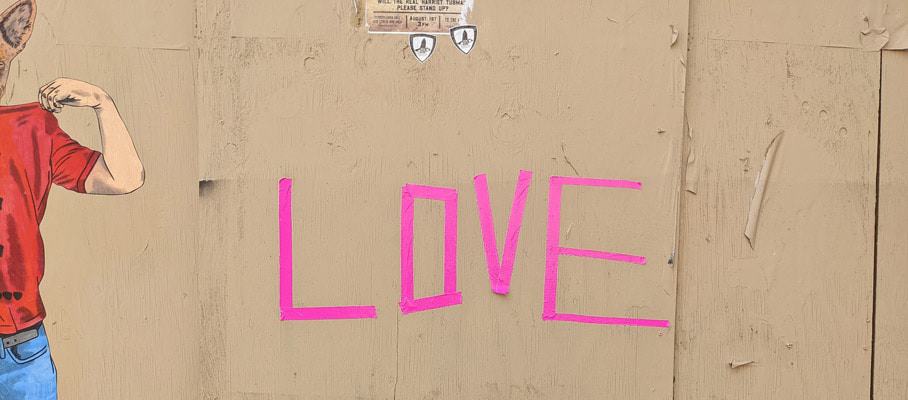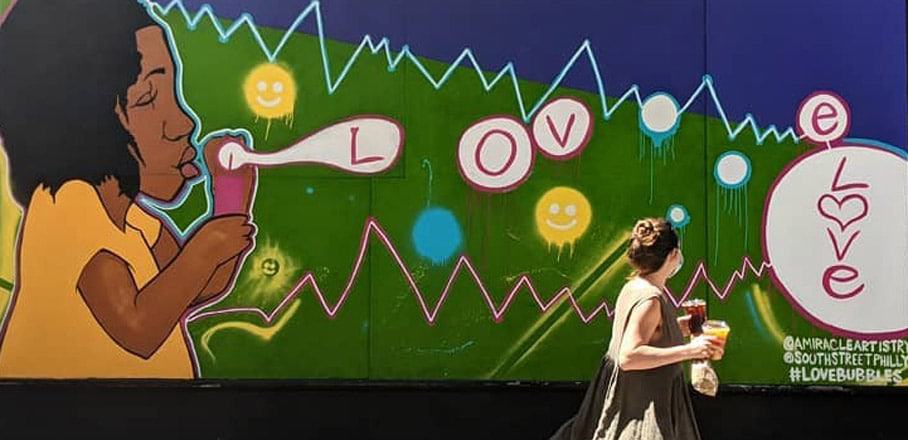The Future (and Past) of Cities is Female
Who defines our cities? And what are the consequences of these definitions? Katrina Johnston-Zimmerman shares some reflections.
I find it’s always best to go back to the beginning when you’re stuck in a jam. Like they always say, if you lost something it’s probably in the last place you saw it. It’s so interesting to me then that our discussions on an equitable city have nothing to do with what a city is in the first place.
What Is A City?
What is a city?
Simple enough question, but all the more challenging when you consider what definitions you’re referencing – or perhaps more importantly who has done the defining thus far.
Take a look at any bookshelf of any city-specific subjects. I guarantee you that nine out of ten will have been authored by a man. Everything from Happy Cities to Healthy Cities – the Creative Class to Cities for People – all of which have their virtue, but all of which have been created on account of one half of our species. And all of which have their limitations.
When you ask an economist what a city is, they’ll tell you it’s a central meeting place for the market. It’s dense because it needs more minds in one place to make more money to grow the GDP. There’s a central business district that concentrates this income generation and innovation whereby bumping into halls can spark new ideas and business deals are just a handshake away. In short, the city is an economic engine.
If you ask a mayor what a city is, there’s a chance they’ll talk about what makes their city so great. They’re a spokesperson, a “head” to a body politic whose role is defined by how successful or unsuccessful their particular city is. They’ll think about how well known their city is, how frequently it’s included in “best of” lists, and how famous their tallest skyscraper or biggest sports stadium is. To them, the city is a product.
And if we have this conversation with architects or even many urban planners – picking their brain on the built environment and the inner workings of an agglomeration so complex, both shifting and static. Always analysed, coded, constructed, a mechanical wonder that never ceases to stretch the limits of engineering and progress, whatever that means. A city like this is a system of systems – separated into departments and zones – picked apart like a robot (as though a blueprint could be applied to something so organic).
Furthermore, as we find these minds to converse with, we’ll be asking mostly men from a rigidly western point of view. The city comes, as they claim, from the Roman Empire – a place of stately columns and grandiose centres of democracy. A city where the ultimate “public” space, the Roman Forum, supposedly birthed the idea of meeting for lively civic discourse (if only for a few). Where a city is planned, a performance so to speak, and ultimately a representation of the “civilized” human ideal. A city more defined as a state, so devoid of any resemblance to the nature that exists outside of it or any consideration to our own nature within it. To them, the city is control: a rigid hierarchical structure meant to tame our animal instincts.
Who Defines Cities?
But what’s more is the demographics of each of these crucial components to any city:
- About three men for every one woman major in Economics in the US.
- The percentage of women registered as architects in the US is only 17 per cent, and only 0.4 per cent of those are women of colour.
- Only 14 per cent of engineers and 36 per cent of commercial realtors are women.
- And as of 2019, only 22 per cent of mayors in the US were women.
And even though women now make up more registered urban planners in the US, they still only make up 10 per cent of planners worldwide and rarely have the representation they deserve at the top echelons of companies and departments.
It’s becoming more widely understood that the way we build and manage our urban environment has been dictated by one select group to the detriment of the rest of us – those of us who are one of many qualities that are not cis male.
But it’s also important to emphasise that the cities we move through – these systems and streets and skyscrapers as determined and demoed by this limited experience – helps define what a city is for all of its inhabitants. Even subconsciously, we move through these spaces taking for granted that this is what a city is – and by extension – what it should be.
And how we define something matters.
If we consider a city simply a centre for commerce, we prioritise the biggest companies and best business deals – at the detriment of the small scale, even scrappy, informal economy that people rely upon every day.
If we consider a city to be a product, we run the risk of making it shiny on the surface (so to speak) while neglecting the root causes of what makes a city dangerous or dirty – all in an attempt to attract the highest bidder to become the best advertisement for its “consumers”.
And if we think of a city as some unfeeling machine we will never allow ourselves to feel the pulse – the soul – of a city and its people and creatures like a rainforest of never-ending activity: a thing more akin to life and death on this planet itself than the soul-less automobiles that have taken over.
How Else Can A City Be Defined?
So if a city is not something defined by a male mindset, then what is a city according to someone else?
As an urban anthropologist, I have my idea. I think in the limited capacity to which we have attempted to define what a city is, we have managed to ignore the blatantly obvious: the city is a home.

A temporary tape installation spells out LOVE on a wall in Philadelphia, USA © Katrina Johnston-Zimmerman
If you look at our more equitable earliest cities this rings true. Çatalhöyük was more like a commune than a metropolis – an accumulation of buildings with little delineation between public and private space, where resources were shared and there was little evidence for hierarchical inequities or separation of gender roles.
And Göbekli Tepe, built 2,000 years earlier, was in fact a temple bringing people together before there were extensive permanent settlements around what was clearly a strong enough shared belief system to construct the world’s oldest known megaliths without any apparent dictator to coordinate it.
But even if we didn’t have these examples, we have the ability to shape – and reshape – not only our environment but how we imagine this environment to be. According to many of those male urbanism experts, the city is our greatest invention. And while it’s true that we have literally invented everything, it also means that we can invent something better: a city designed by more of us that will work for all of us.
And if a city is a home, more than just its buildings and social structure – it’s a place that is built on care and compassion, not competition or consumerism. It’s a place where the mayor is more like a mother taking care of the people. Where the systems cross-collaborate even in their complexity. And where each citizen has autonomy enough to co-create their own spaces through transparency and trust.
This is of course just my idea, one of many. But diversity of input can only create a better output. We’ll need as many “innovative” ideas as we can get if we are to shift a paradigm that has been entrenched for the past 4,000 or 5,000 years.
And while I personally find solace in knowing if we’ve been there before, we can certainly be there again – it will no doubt take a village to reimagine the future city.
- The Future (and Past) of Cities is Female - 15. March 2022
